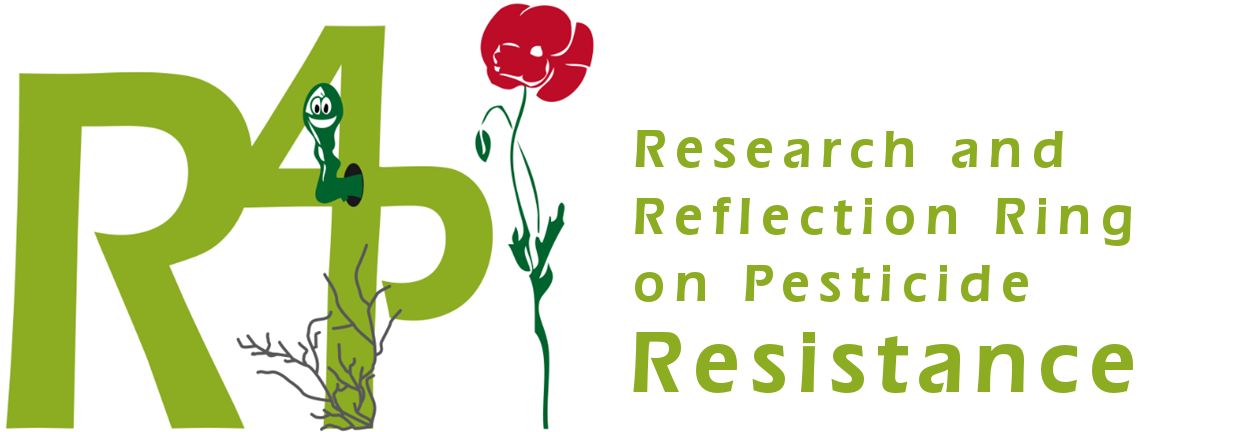While the selection of PPP resistance generally leads to decreases in field treatment efficacy, a treatment failure is not necessarily due to a case of PPP resistance. A first reason for a treatment failure may be the choice of the wrong active substance: the pest is not naturally sensitive to the applied substance. Even when an appropriate active substance has been selected, factors other than resistance influence the effectiveness of the PPP. For maximum effectiveness, it is imperative that the PPP has been applied in accordance with the recommendations of use.
The main factors that can lead to treatment failure are:
- treatment of the wrong vegetative stage of the host plant (figure 2a)
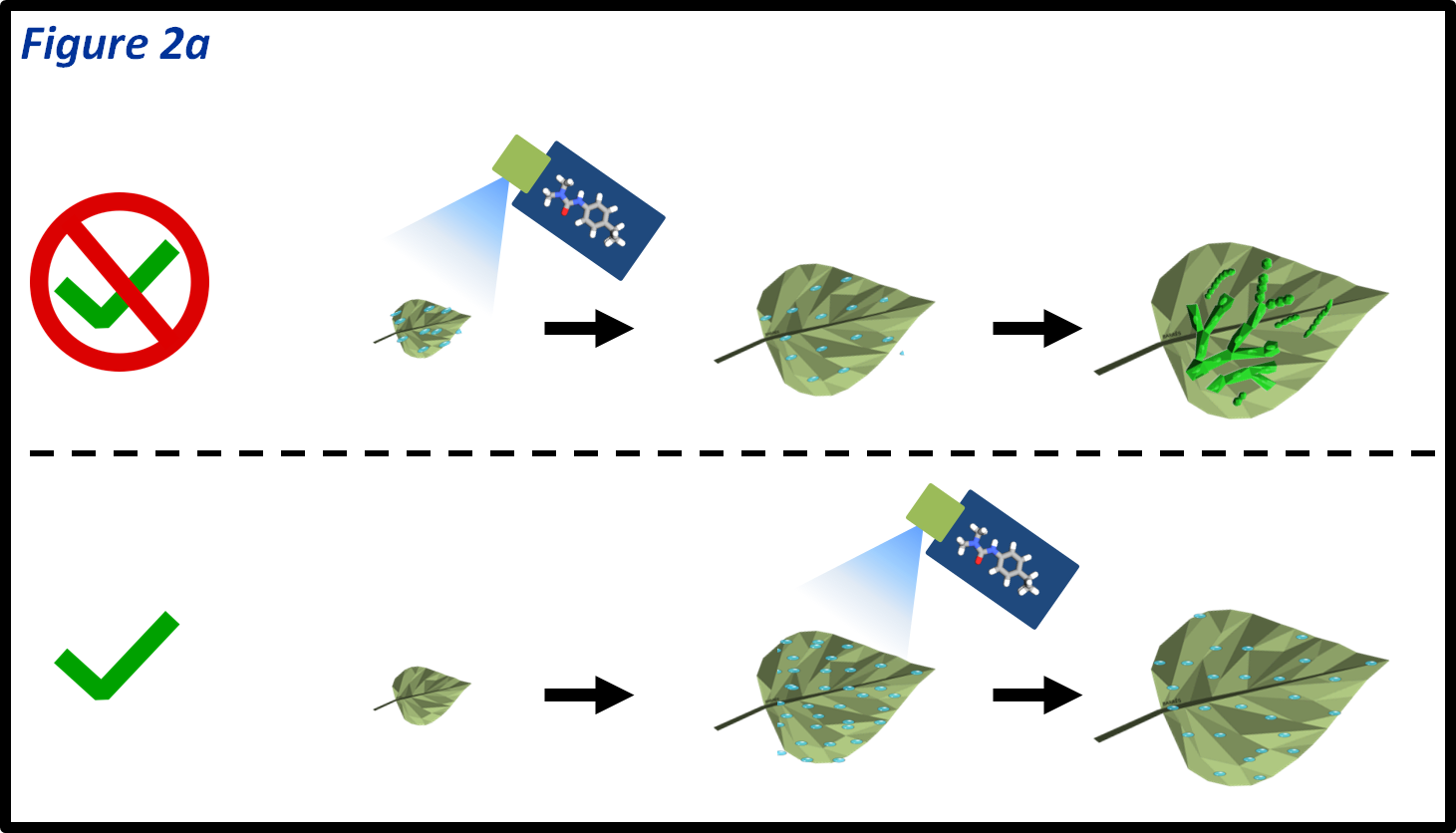 | figure 2a : Treatment failure does not mean resistance. PPP must be applied at the right vegetative stage of the host plant. Treatment at the wrong stage can result in poor crop protection. |
- the absence of the pest at the time of treatment, or a treatment made too early in advance of the arrival of the pest on the crop (figure 2b)
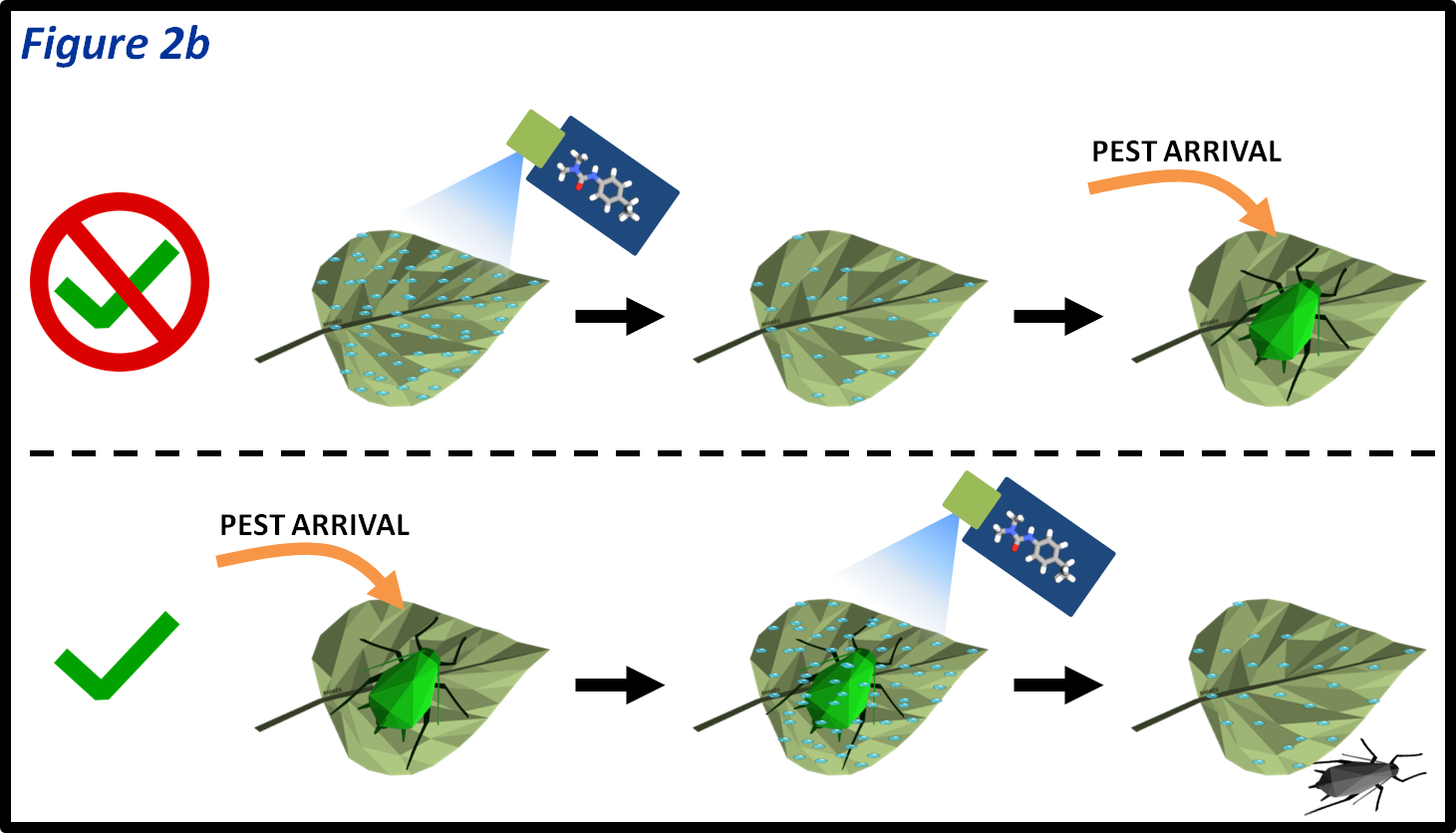 | figure 2b : Treatment failure does not mean resistance. The treatment must be applied at the right time, relative to the arrival of the pest or pathogen or the emergence of the weed. If treatment is carried out too early, the protection provided by the product may dissipate before the arrival of the pest or pathogen or the emergence of the weed. |
- the application of PPP on a developmental stage / physiological state of the pest during which it is not sensitive to treatment (figure 2c)
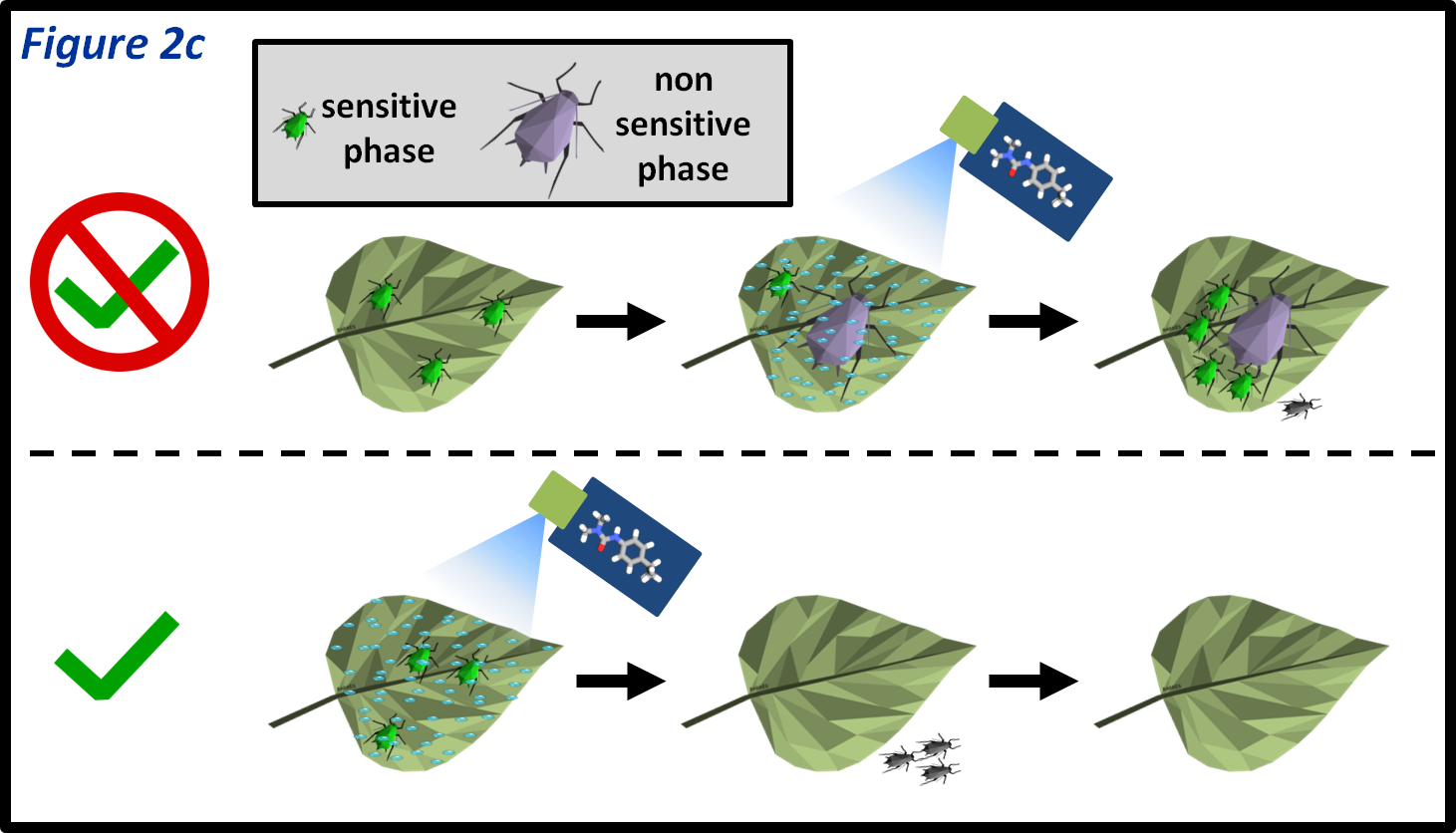
| figure 2c : Treatment failure does not mean resistance. Not all stages of a pest are necessarily sensitive to PPP. Application must be made on the correct stage of the pest to obtain maximum effectiveness. If the treatment is performed on the wrong stage of the pest, individuals may survive and the treatment may be failing. |
- treatment under poor environmental conditions (temperature, humidity, precipitation, wind, etc.) (figure 2d)
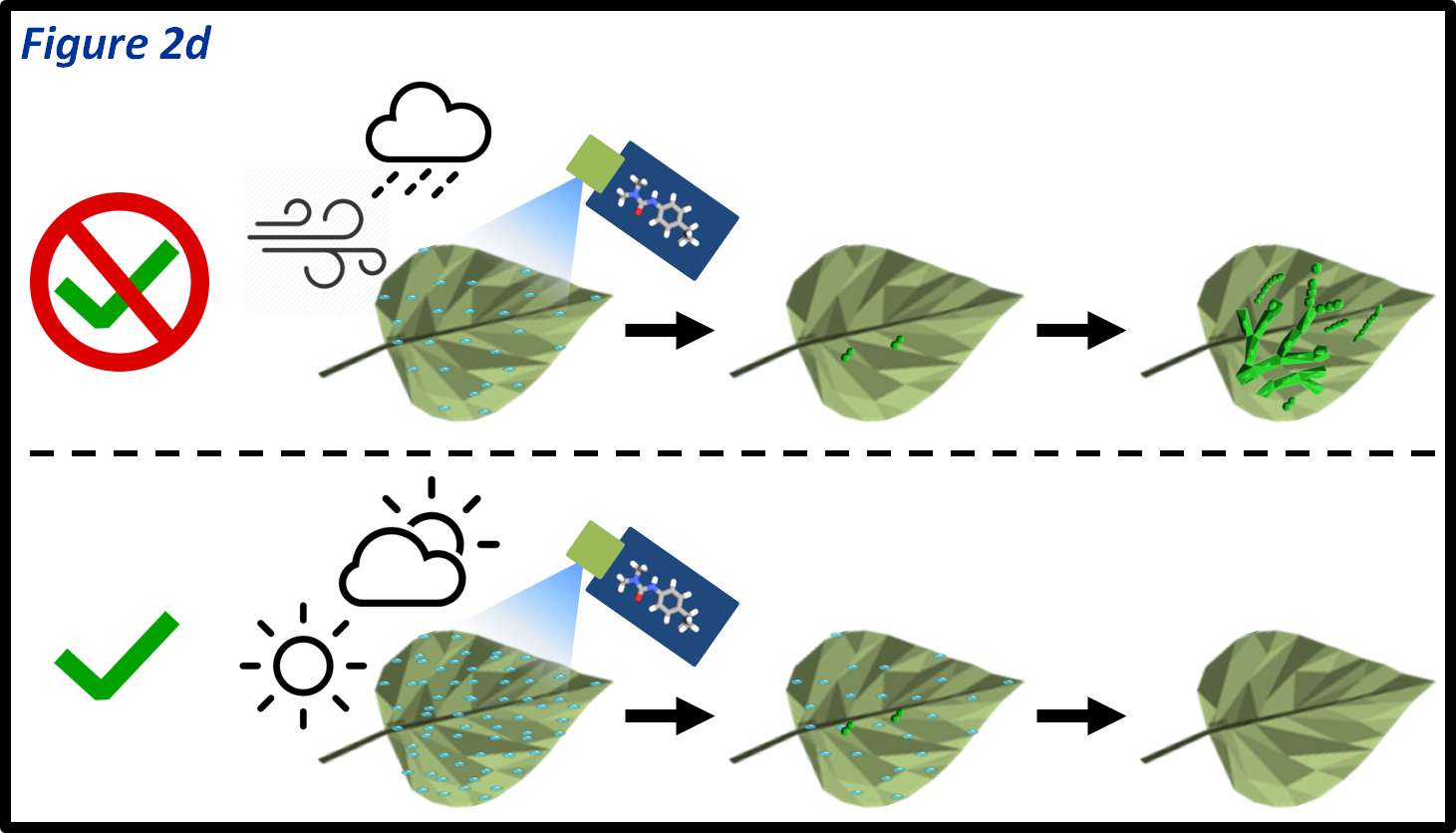 | figure 2d : Treatment failure does not mean resistance. Environmental conditions during the application of the PPP are essential. PPPs are generally not recommended or permitted in wet weather or when there is too much wind. Humidity also plays an important role in the penetration of the active substance. If the treatment is carried out under poor environmental conditions, the crop may not be protected. |
- poor spreading quality which does not allow the pest to be reached with the effective dose (dose necessary to kill the pest) and therefore results in incomplete or ineffective control (figure 2e)
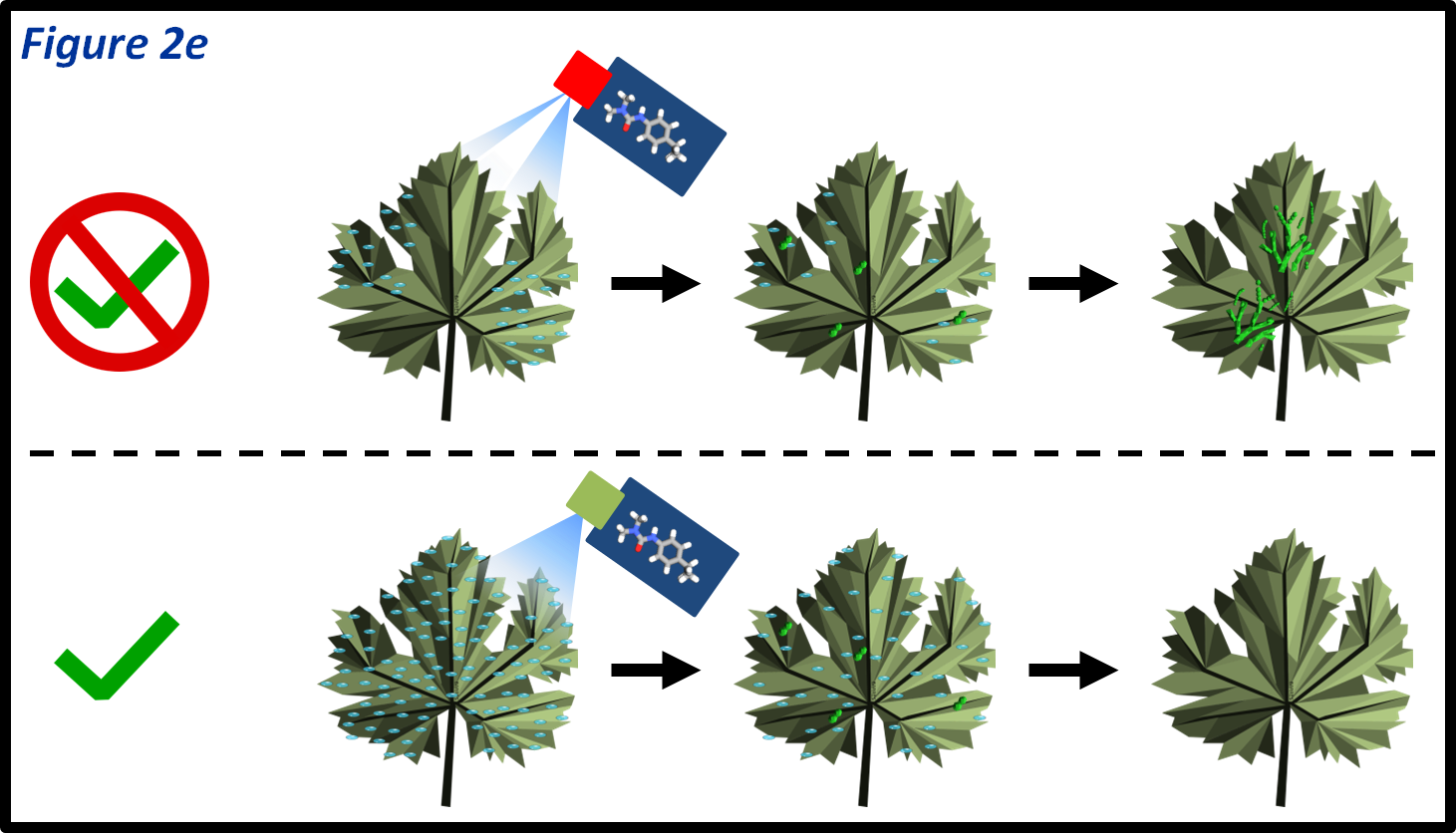 | figure 2e : Treatment failure does not mean resistance. The quality of the spreading material is essential. Thus, unsuitable or damaged nozzles can result in partial crop protection and ultimately treatment failure. |
- application of too low a PPP dose and/or poor adjuvantation of the PPP, resulting in ineffective treatment on the pest (figure 2f)
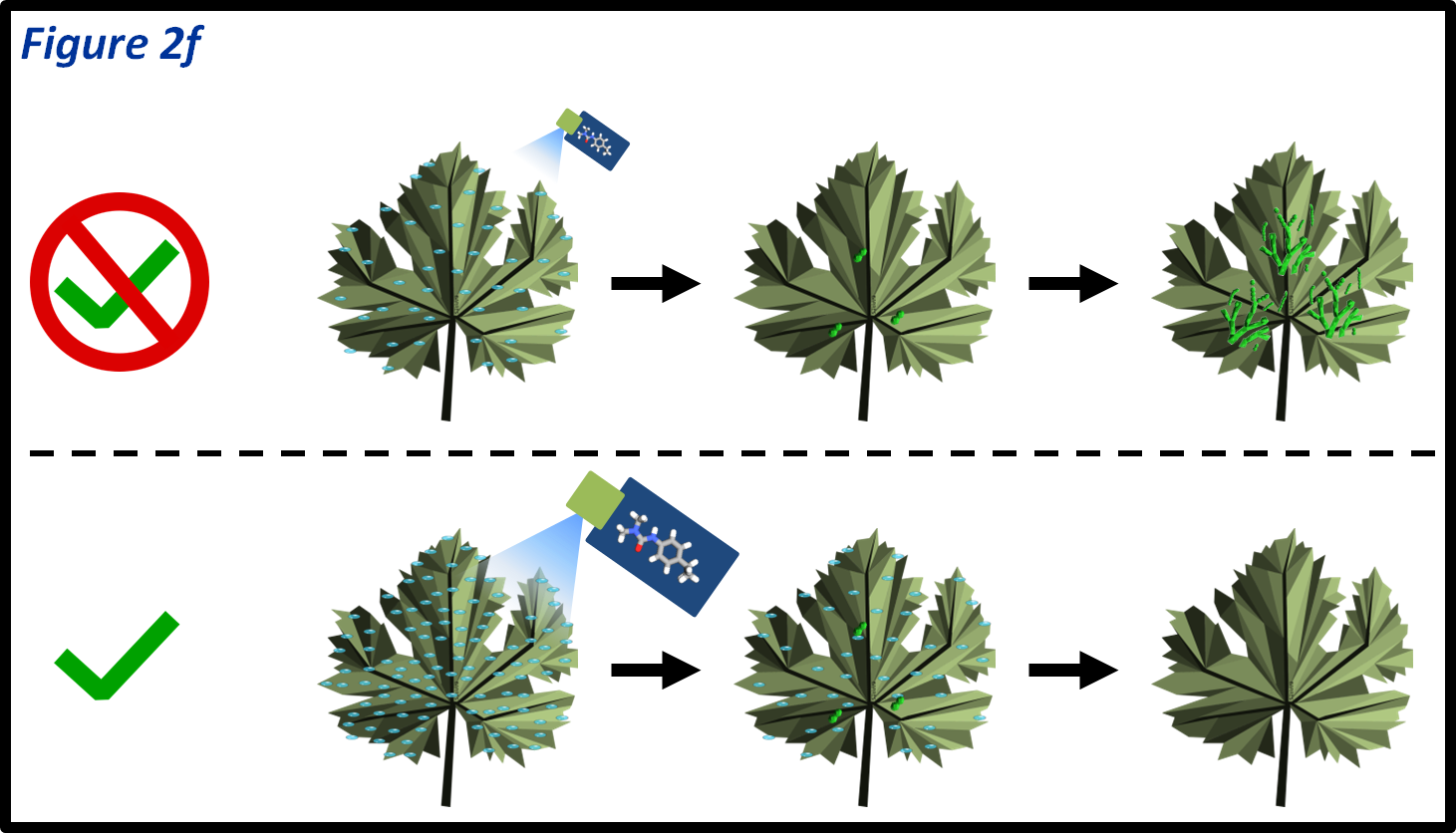 | figure 2f: Treatment failure does not mean resistance. The application of a reduced rate of PPP may not be sufficient to effectively protect the crop. Similarly, the use of adjuvants is often important for effective treatment. The application of a reduced dose and/or misuse of adjuvants, if it results in poor treatment efficacy, may even promote the progressive selection of PPP resistance. |
- It is also essential to remember that after application, the active substances will degrade (more or less rapidly) under the effect of UV and/or micro-organisms (especially for products applied in or on the soil, or seed treatments, figure 3). The formulation and use of adjuvants can minimize these effects by promoting or accelerating the penetration of the active substance into the plant and/or the pest.
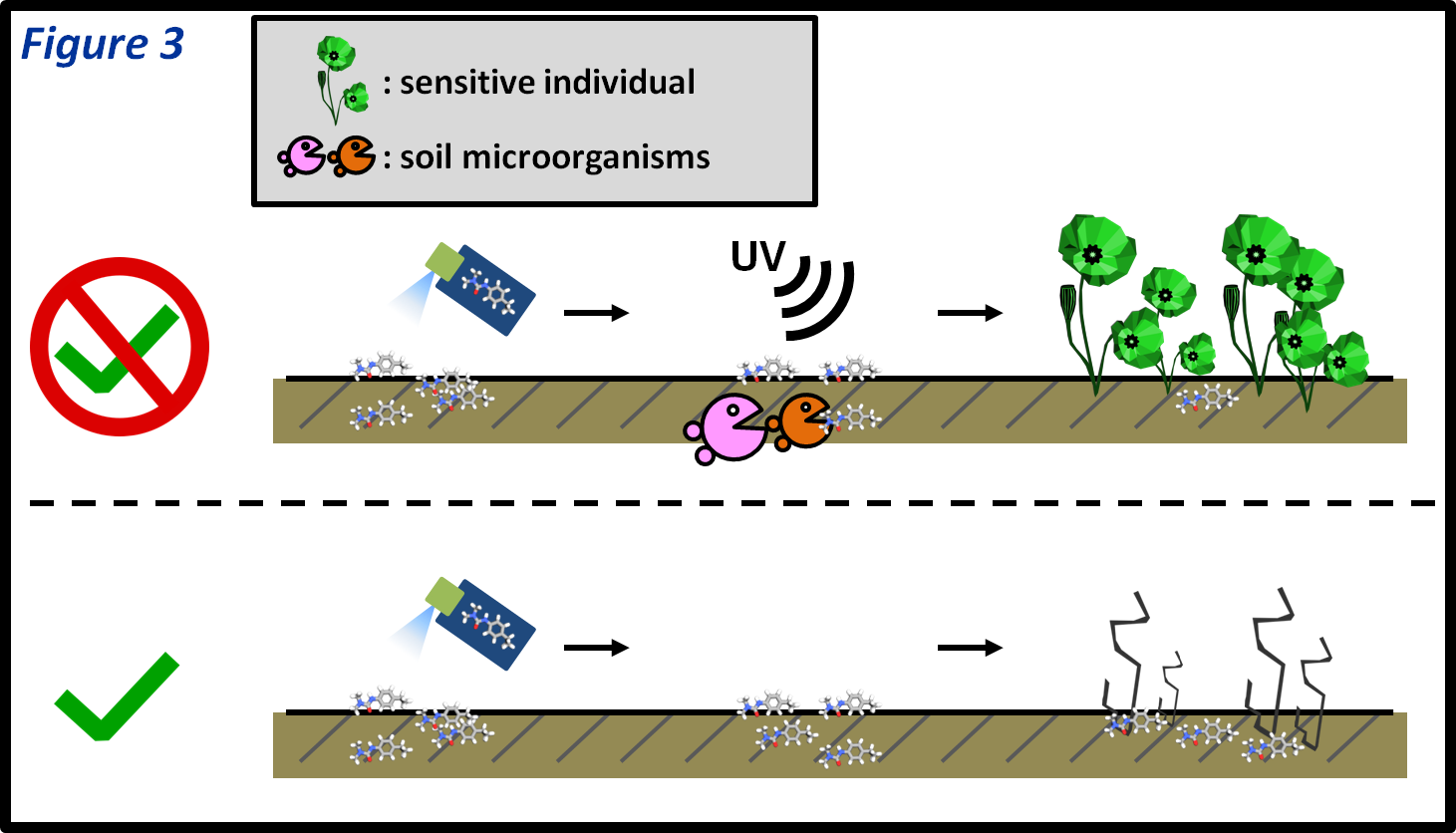 | figure 3: PPPs, once applied on the plot, will degrade under the action of the environment (UV, temperature...) or microorganisms. The speed of degradation phenomena varies greatly depending on the active substances, some being much more stable than others. These degradation phenomena explain why it is sometimes necessary to carry out treatments repeatedly. |

